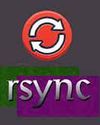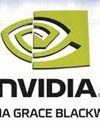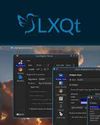
Organisations of all sizes have started moving to the cloud. There is no longer a question of ‘if’ an enterprise will move to the cloud; it’s only a matter of ‘when’. However, for most enterprises, the journey from on-premises data centres to the cloud is a Herculean task. One unwritten rule is that cloud migration should be seamless and invisible to end users. Additional challenges are a learning curve for the whole organisation, and migration to be completed within a defined timeline to avoid the dual costs of maintaining both on-premises data centres and the cloud infrastructure. Hence, most organisations follow the lift-and-shift approach (of replicating on-premises infra in the cloud) rather than trying to define all the infrastructure newly in the cloud. They also make some pragmatic choices and take decisions that prioritise ‘progress over perfection’.
Every infrastructure element and service usage in the cloud comes with an associated cost. When an enterprise migrates quickly to the cloud, and just tries to replicate on-premises infrastructure, cloud costs shoot higher than expected. Keeping cloud costs optimal is a recurring goal for most organisations, especially in the age of economic uncertainties and challenges. So, cloud migration is usually followed-up with a plan to optimise cloud costs by adopting the cloud-native approach.
In this article, we will look at various strategies that can be adopted to optimise cloud costs in the Google Cloud Platform (GCP).
Cost analysis
If you can’t measure it, you can’t improve it. — Peter Drucker
Bu hikaye Open Source For You dergisinin October 2024 sayısından alınmıştır.
Start your 7-day Magzter GOLD free trial to access thousands of curated premium stories, and 9,000+ magazines and newspapers.
Already a subscriber ? Giriş Yap
Bu hikaye Open Source For You dergisinin October 2024 sayısından alınmıştır.
Start your 7-day Magzter GOLD free trial to access thousands of curated premium stories, and 9,000+ magazines and newspapers.
Already a subscriber? Giriş Yap

Red Hat unveils Red Hat OpenShift Virtualization Engine
Red Hat OpenShift Virtualization Engine is a new edition of Red Hat OpenShift that offers a dedicated solution for organisations to leverage the virtualisation capabilities already available within Red Hat OpenShift.

Spring AI: A Door to GenAI Heaven for Java Developers
Let's explore the Spring AI framework and its advantages, and look at how it is helping Java developers adopt AI.

Significant security vulnerabilities drive the release of Rsync 3.4
Rsync, the widely used utility for incremental file transfers and synchronisation, has released version 3.4. This update isn't packed with exciting new features but is instead critical due to several newly disclosed security vulnerabilities.

NVIDIA puts Grace Blackwell at every AI developer's fingertips
NVIDIA has introduced NVIDIA Project DIGITS, a groundbreaking personal AI supercomputer designed to empower AI researchers, data scientists, and students NVIDIA® NVIDIA GRACE BLACKWELL with the immense capabilities of the NVIDIA Grace Blackwell platform.

Top Tools for DevOps, Cybersecurity, and Cloud Management in 2025
In 2025, organisations will continue to rely on open source tools to retain a competitive edge. We look at why the best tools for DevOps, cybersecurity and cloud management will remain relevant and how best to integrate them into your organisation.

CREW: Open source platform to improve human-AI interaction
As human-AI collaboration deepens, critical questions arise: How should humans and AI complement one another? What kind of feedback enhances AI training? How can trust in AI be optimised to balance collaboration without over-reliance? Researchers at Duke University are addressing these challenges through CREW-an innovative platform designed to advance human-AI teaming.

Red Hat completes the acquisition of Neural Magic
Red Hat, Inc., has announced the completion of its acquisition of Neural Magic, a trailblazer in software and algorithms that accelerate generative AI (GenAI) inference workloads.

The Do's and Don'ts for Software Architects
Here's a list of best practices for software architects as well as the common mistakes they should try not to fall prey to.

openSUSE's Tumbleweed introduces Wayland support for the LXQt desktop environment
The openSUSE Project has announced that its Tumbleweed rolling release distribution now includes Wayland support for users of the LXQt desktop environment.

A Guide for Software Architects: Common Mistakes and Best Practices
Software architects play an invaluable role in the digital transformation of an organisation. To make a mark, they must imbibe certain qualities and avoid common errors.